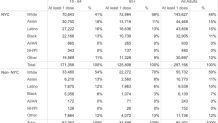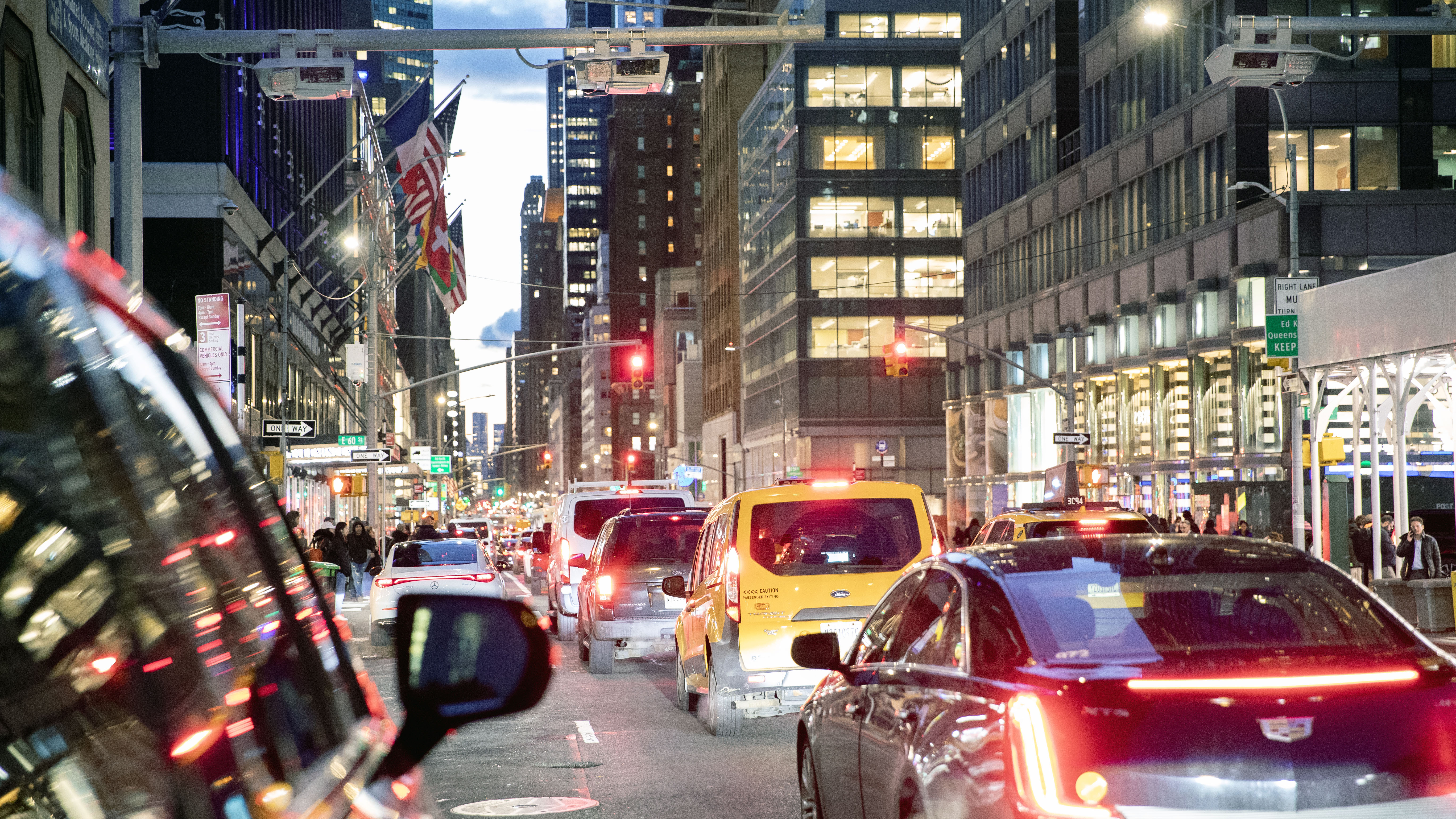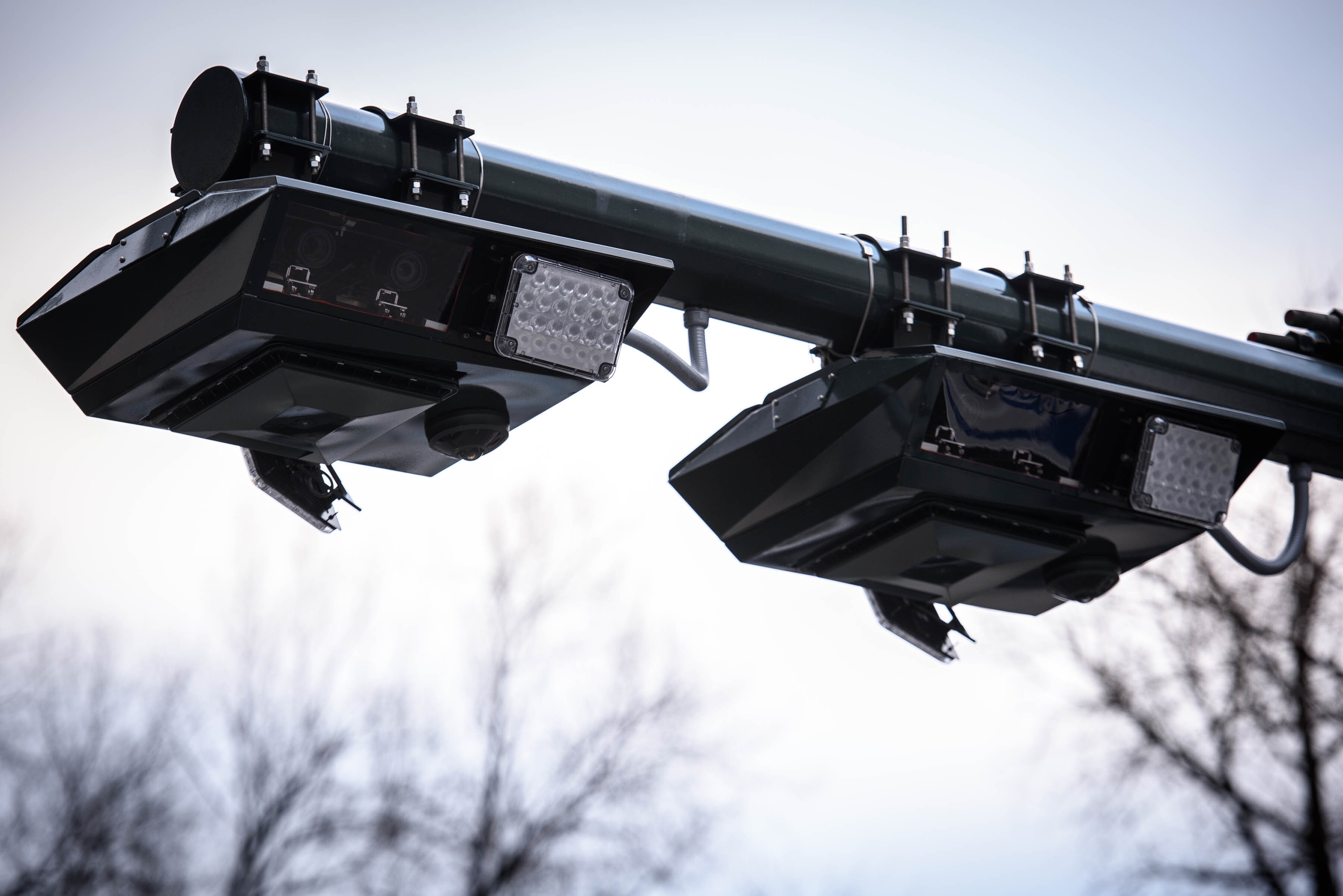What to Know
- NYC released demographic data on Sunday for first dose vaccinations accounting for nearly seven weeks of inoculations
- The number of white New Yorkers to receive their first dose is nearly double of any minority group, according to available city data
- City vaccine demographics show similar disparities seen in most states with publicly accessible data
New Yorker elected leaders faced renewed questions of how to improve vaccine distribution on Monday, one day after Mayor Bill de Blasio shared demographic data showing a significant racial disparity among people who have received their first dose.
Mayor Bill de Blasio unveiled the city's first look at a breakdown of race and ethnicity among those vaccinated Sunday while acknowledging a clear disparity among demographic groups. According to available data published to the city's website, the number of white New Yorkers to receive their first dose is more than double that of any minority group.
The city data unveiled Sunday morning shows which New York City residents have received their first dose: 48 percent white, 15 percent Asian, 15 percent Latino, 11 percent Black. Those number are much higher for people from outside the city who came in to get their shot (this group should be made up of people who work in the city and qualify). Of non-residents, 58 percent are white and the next highest group are Asians at 11 percent.
“Clearly, we do see a profound disparity that needs to be addressed aggressively and creatively,” de Blasio said. “We’ve got a profound problem of distrust and hesitancy, particularly in communities of color.”

Further complicating the breakdown of city data, an estimated 40 percent of people who got their first shot chose not to share demographic data. That percentage counts for more than 263,000 people.
Changes are coming for the vaccination appointment process, de Blasio said Sunday. Among those new efforts the city hopes to reach out to groups, the city's website will soon be available in 10 additional languages. To date, the website only offered English and Spanish.
"The very folks who are in the greatest danger are not getting vaccinated sufficiently," de Blasio said, while promising to add six additional priority zones throughout the city.
NBC News has reported vaccination rates for Black Americans have not caught up to those of White Americans, according to a new KHN analysis. In at least 23 states were demographic data has become available, stats show white residents are being vaccinated at higher rates than Black residents, often at double the rate — or even higher.
At this state level, New York has not released widespread demographic data, but Gov. Andrew Cuomo said that data would be coming later this week. On a media call Sunday morning, he shared a demographic breakdown among hospital workers in the state.
News
During a news conference the following day, Cuomo said his team anticipated racial disparities in the distribution process of the vaccine. When questioned about the possibility of expanding eligibility to restaurant workers, the governor said there already wasn't enough doses to go around for the 7 million currently eligible.
"Tell me who you want to remove from eligibility. You want to add someone? We already don't have enough. Who do you want to remove? You want to remove teachers, police, fire, 65 plus?" Cuomo asked rhetorically. "It's a cheap, insincere discussion Yes, I would like to see restaurant workers eligible, makes total sense. But what does eligibility mean when you dot have the supply necessary."
According to the governor, 63 percent of hospital workers to get the vaccine are white, who makeup 70 percent of hospital workforce. Meanwhile, 16 percent of the group were Asian, 10 percent were Latinos and 10 percent were Black hospital workers.
Cuomo considers this group the ideal control group because access to the vaccine "is not an issue." He wagers a statewide breakdown "would be proportionate to what we see in hospitals because that is almost a perfect control group."
The state's positivity rate Monday was 4.86 percent, Cuomo said -- a significant drop from the positivities reported by the New York governor just three weeks ago. A little more than 8,000 people were hospitalized in the state and another 141 New Yorkers had died from the virus, Cuomo said.
Long-term, state and city officials say the vaccination program is the light at the end of the pandemic tunnel. But it's a long tunnel. States have struggled with federal supply problems from the start, and while President Joe Biden's pledge to boost weekly allocations by about 16 percent for each of the next three weeks has been excitedly welcomed by governors and others, the impact of that three-week increase as far as expediting the process will likely be fairly minimal.
As of Monday, New York state has used 90 percent of the first dose allocation it has received from the federal government since Week 1 of the vaccine rollout, amounting to nearly 1.4 million shots, according to the state's vaccine tracker. Vaccine supply is still a week-to-week operation and hubs are advised to only schedule appointments for the doses they know they will receive. The state is now beginning to use the 250,400 doses that are scheduled to arrive this week, the governor added.
Daily Percentage of Positive Tests by New York Region
Gov. Andrew Cuomo breaks the state into 10 regions for testing purposes and tracks positivity rates to identify potential hotspots. Here's the latest tracking data by region and for the five boroughs. For the latest county-level results statewide, click here
Source: ny.gov
The additional doses the Biden administration pledged to provide weekly over the next three weeks will also help, though it's not clear when those are set to arrive.
New York City has been accelerating the pace of its rollout over the last few weeks especially and administered more than 815,000 total doses throughout January, more than the total population of Seattle, Mayor Bill de Blasio pointed out Monday.
Are you in a cluster zone? Here are the maps -- and a reminder of the rules
New Jersey has dosed fewer people than New York City has by about 25,000, a fact Murphy attributes to limited supply and a weekly federal allocation of less than half what is delivered weekly to New York. Across the river, Cuomo and de Blasio also agree that limited federal vaccine supply has hampered their rollouts.
That said, they expect the process to ramp up considerably under the Biden administration -- and say they are ready to get as many shots in as many arms as possible as soon as the desired supply is there. It's not clear when that will be.
Most of de Blasio's goals for his final year as mayor of New York City focus on that vaccination program. In his pre-recorded State of the City address on Thursday, he also focused on the city's overall recovery, including plans to bring city workers back to their officers by May, vaccinate 5 million people by June, fight climate change and racism and reopen all schools in person by September. His determination to set and achieve "aggressive goals" comes as he failed to deliver on the last goal he set: a million vaccinations in the city by the end of January.
New York City and New Jersey Vaccine Providers
Click on each provider to find more information on scheduling appointments for the COVID-19 Vaccine.
Data: City of New York, State of New Jersey • Nina Lin / NBC
All of these plans could be in jeopardy if a more contagious variant like the U.K. strain leads to an exponential rise in cases at the current stage of the vaccine process. The CDC has said it could come the predominant strain in the U.S. by March -- and with that could come yet another dreaded COVID spike in the spring.
Thus far, Connecticut has confirmed eight cases of the U.K. variant, while New York's count is up to 44 confirmed cases across nine counties. New Jersey has confirmed at least 11 cases, including a fatality in a person with underlying conditions. Only two of New Jersey's patients, who range in age from 10 to 65, had any nexus to travel.
Testing for variants in New York hovers around 100 per day, Dr. Howard Zucker said Sunday. So far, the state has found 44 cases of the U.K. variant out of approximately 6,000 tests, he said. No cases have been detected yet of the South African or Brazilian strains.
Limiting potential places for viral spread has once again become paramount with the emergence of the U.K. variant locally at this vulnerable time. That strain is just one of three highly contagious variants driving concerns locally and nationally. Other more transmissible strains include the Brazilian variant, which was first identified in the U.S. earlier this week, and the South African strain, the first two U.S. cases of which were also detected last week.
The two people found with the South African variant in South Carolina didn't know each other and had no recent travel history, leading the new CDC chief to say Friday, "The presumption is, at this point, that there has been community spread of this strain." She called that "concerning."
Of the multitude of variants that have emerged, Dr. Anthony Fauci says the latter is the one he is most concerned about because lab tests have shown it can diminish the efficacy of the vaccines approved to date. Moderna says it is developing a second booster shot to improve its vaccine efficacy on that strain.
Johnson & Johnson, which revealed trial results for its single-dose vaccine on Friday, says its shot has proven effective in the U.S. but less so in South Africa. On Friday the company said it was 72 percent effective at preventing COVID here, and 85 percent effective in preventing the most serious symptoms (compared to Pfizer and Moderna, both at roughly 95 percent effective).The company says it will file an application for emergency use soon in the U.S. and then abroad.
Despite some concerns, Fauci and other experts believe scientists have options aplenty to make adjustments to maintain the effectiveness of vaccines against new strains and ones that will emerge over time. In the meantime, the best protection is for the public to continue with proven mitigation efforts, he says.
Overall, the new strains do not appear to be more lethal, though there has been some changing evidence around that as far as the U.K. strain is concerned. They are definitively more transmissible, officials and public health experts say.
More transmissibility means more cases, which will lead to some increase in hospitalizations by default and ultimately, more coronavirus deaths -- for a country that already leads the world in them. The U.S. has reported more than 430,000 virus-related deaths and surpassed 26 million cases Friday since the start of the pandemic.
January has now overtaken December as the deadliest month of the pandemic for the U.S. so far. The new head of the CDC said Wednesday the U.S. could hit a total of 514,00 deaths by Feb. 20. Globally, the number of COVID-19 cases has topped 100 million, while worldwide deaths have crossed the 2.1 million mark.



